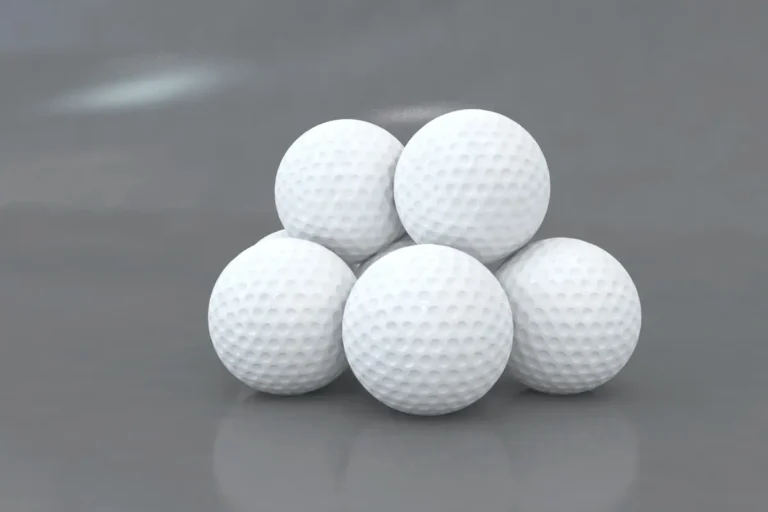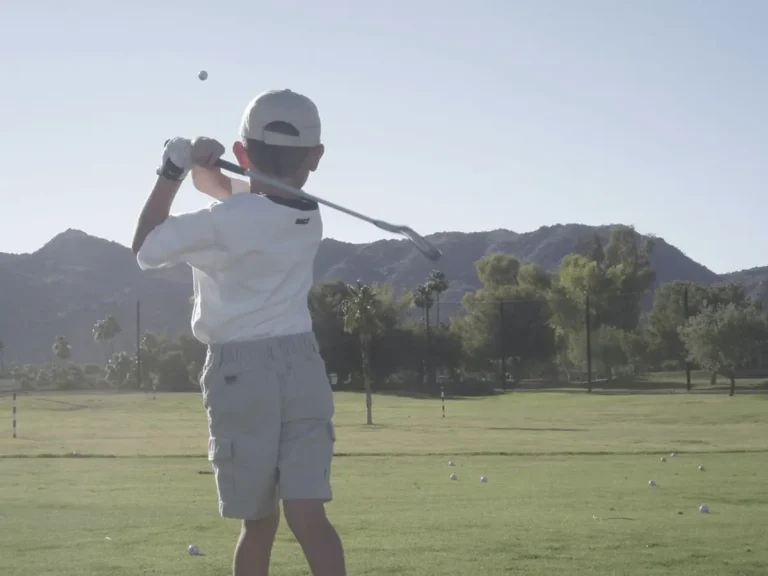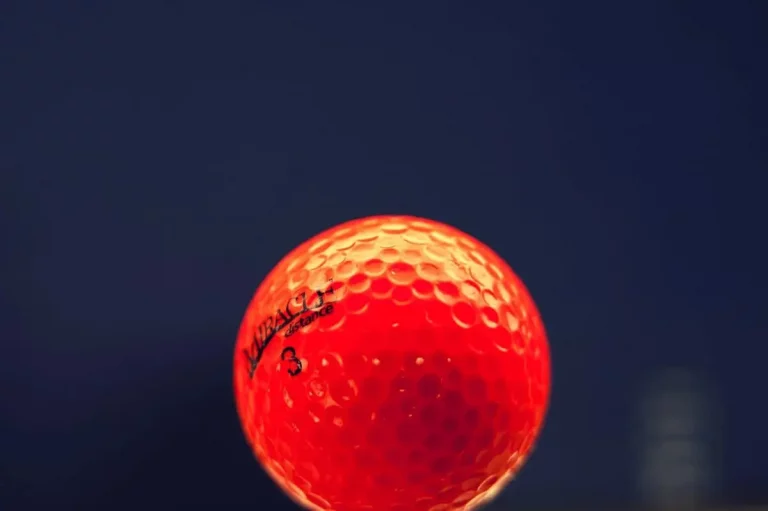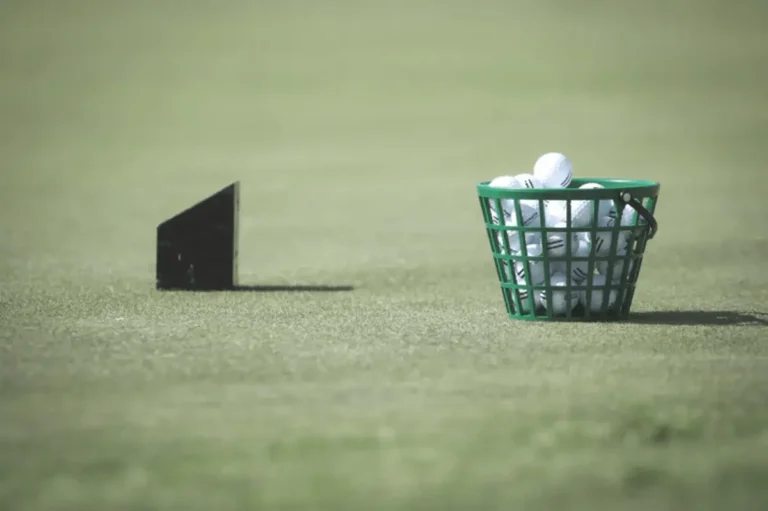Callaway Superhot 55 Golf Ball Review
Many golfers pour all their attention and money into their clubs. But your choice of golf ball can make a big difference as well.
During our Callaway Superhot 55 review, the technology and engineering Callaway incorporated in its latest product impressed us.
Maybe your golf game has stalled. Or you’re looking for something fresh to give your drives and fairway play some edge. If so, consider changing your ball and taking the Superhot 55 for a spin.
Read on to find out:
- How to choose a golf ball
- Callaway Superhot 55 review
- Specific features of the Superhot 55
- User reviews of the Superhot 55
- Product comparisons with other top-selling golf balls
Factors to Consider in a Golf Ball
It’s always tempting to go with cheap golf balls. Especially if you have a habit of losing them on the course. But your choice of golf ball can say a lot, and may even take a few strokes off your game.
When you’re choosing balls, the key considerations are spin and compression. Here’s why these factors matter.
Spin
In terms of aerodynamics, spin is among the most important aspects. A high-spin ball decreases drag and will travel farther. This is the result of backspin, which is imparted to the ball from the clubface.
If you have good ball control but want a few extra yards on your drive, choose a ball with high spin.
A good backspin can also straighten your shots if you tend to hook the ball. Hooking is most often caused when sidespin exceeds backspin. Giving your ball a strong backspin compensates for this and remedies the sidespin that causes hooking.
A low-spin ball might decrease flight distance, but it also lowers the chances of a slice. Slicing is primarily caused by excessive backspin, although other drive factors can contribute.
While a low-spin ball doesn’t travel as well, you will get more rolling distance with less backspin. If you’re aiming for the green, you might appreciate a low-spin ball that bounces and rolls. These can give you more distance and control in hard surface situations.
Of course, you can always choose a ball with a medium spin level. These are perhaps the best choice for beginners. Or for golfers with solid drives and decent ball control who aren’t looking for drastic improvements.
Compression
When you strike the golf ball with your club, the ball is briefly deformed before it flies away. Golfers call the measure of this deformation compression.
Golf ball compression is measured on a scale of 0 to 200. A compression value of 200 means the ball is rigid and does not compress at all. Conversely, 0 means the ball is flexible and can deform as much as one-fifth of an inch upon impact.
As a rule of thumb, compressible balls travel farther than non-compressible options. If you want to improve your distance, choose a ball with a compression value of around 50.
But if you already have a fast, powerful swing, consider a rigid ball for more control. In this case, a compression value of around 100 offers the best performance.
Our Callaway Superhot 55 Review

The Callaway Superhot 55 is one of the newest and greatest middle-handicap golf balls.
This three-piece, soft Surlyn-covered ball has a compression value of 55. It’s the sister ball to the more rigid Superhot 70. The Superhot 55 features a trionomer cover rather than the 70’s ionomer cover.
Both Superhot balls are covered with 332 dimples in a hexagonal pattern. This dimple pattern gives greater lift and distance on those long drives.
Our Callaway Superhot 55 review compared this ball to the Titleist Pro V1. We found Callaway’s balls better priced and they created more backspin with irons.
Overall, this ball is for an improving golfer who has lowered his or her handicap. Or the golfer who no longer needs the extreme distance of a Supersoft ball.
The reduced compression offers greater control and finesse. And its affordability will up your game without breaking the bank.
Pros:
- The affordable, mid-range price point
- Durable outer layer
- Greater distance and lift
- Ideal for middle handicappers
- Offers a good amount of control on drives
Cons:
- Less finesse with high irons
- Not as much control on the greens as some comparable options
Callaway Superhot 55 Review: Key Features
The Callaway Superhot 55 bridges the gap between the company’s Supersoft and Superhot 70 balls. It offers balanced shots that provide distance and control to mid and high-handicappers alike.
Here’s what you need to know about the Superhot 55.
Three Layer Construction

The material construction of these balls delivers a truly exceptional spin with woods. During our Callaway Superhot 55 review, we also found the backspin contributes significant lift and distance on drives.
The 55 is composed of three layers—a technological improvement over the two-layered Supersoft. Using three separate materials in construction allows Callaway to customize the spin and deliver backspin only when needed.
You will still feel the spin on your drives and long shots. But the soft mantle and cover reduce this when using irons and wedges. You’ll definitely appreciate the greater control with this ball when you get closer to the green.
The triple-layer construction balances the ball, helping to eliminate hooks and slices. It also boosts your chances of a nice straight shot.
Coating
The high-tech Surlyn trionomer coating really helps lower spin when using irons. Meaning fewer hooks or slices in your middle game. The cover and the mantle work together well to enable straight shots.
This soft coating should also improve your short game and help you get onto the green. Even while putting, you’ll notice the improved control and reduced skid. Although, we note that other balls might be better putt choices.
The coating may feel soft on your irons, but it’s solid enough for your woods. You won’t sacrifice any distance to the compressibility of the Superhot 55.
Dimple Aerodynamics

Aerodynamic tests show that dimple patterns can significantly reduce drag in headwinds, tailwinds, and crosswinds.
Callaway’s patented HEX dimple pattern provides unique aerodynamics. After our Callaway Superhot 55 review, we think it’s a great tee-to-green, distance ball.
The coating and dimple pattern work to promote low drag and optimal lift. You’ll be shocked by how much air time your drives have with this ball. And this hang time should translate to increased distance.
Callaway’s aerodynamics is what really sets it apart from other brands. The HEX pattern eliminates the flat space that circular dimples leave behind. As a result, the increased dimple area creates a larger turbulent zone around the ball. This embraces the ball mid-flight for smoother sailing.
Core Compression
Callaway balanced the 55’s stiff, aerodynamic shell with a soft, compressive core. It gives this ball a beautifully soft feel that should add a few yards to your drives.
The high-velocity core itself has a compression value of 15. Combined with the other layers, the overall compression rating of 55 provides increased speed and distance.
It’s not too soft, though. Callaway constructed this ball with less compression than the Supersoft model. As you can imagine, this reduces drive distance somewhat. However, you might find the straighter shots in your close game more than make up for this.
The Callaway Superhot 55: User Reviews
During the Callaway Superhot 55 review, we found this ball provided superior performance well suited to the tester’s skill level and handicap.
But don’t just take our word for it. Many Callaway Superhot 55 golfers around the world had similar experiences. Take a look at what they had to say here.
Alternatives to the Callaway Superhot 55

We understand that no matter how much we love this ball, it might not be for every golfer. With that in mind, we’ve included some similar options below.
If you’re a diehard fan of Callaway balls but the Superhot 55 just isn’t matching your game, consider switching to the Supersoft or Superhot 70.
But if Callaway isn’t working for you, check out these premium golf ball alternatives:
Volvik Crystal

If you’re a golfer with a slow to moderate swing velocity, the Volvik Crystal might give you an edge on distance.
This three-layer premium golf ball absorbs more of the kinetic energy from your swing to create the fastest velocity. Plus its rigid outer layer and balanced core give it a little extra roll on smooth surfaces.
- Price: Comparable to the Callaway Superhot 55
- Spin: Average
- Compression: Extremely hard
- Aerodynamics: Good, but not uniquely improved
If you have a slow swing and want a quality ball with high compression, go for the Volvik Crystal.
Bridgestone e6

Pretty much every golfer on the internet agrees the Bridgestone e6 is the straightest shooting ball available. Golf pros on every website and forum recommend it for reducing hooks and slices.
In addition to the e6’s fantastic spin, it has unique aerodynamic qualities due to its “Dual Dimple” outer layer. This patented design improves speed and reduces drag for a longer carry and flight time.
- Cost: Less than the Callaway Superhot 55
- Spin: Highest rated in the premium golf ball category
- Compression: Comparable to the Superhot 55
- Aerodynamics: Similar performance to the original design
For a golf ball that costs less than the Callaway Superhot 55, consider the Bridgestone e6. If you really need to improve your accuracy and cut a few points from your handicap, this ball is worth the shot (pun intended).
Titleist Velocity

The Velocity is the only two-layer ball we’re looking at in our Callaway Superhot 55 review.
We’ve included it because it’s another long-distance ball for slow swingers. It features extremely hard compression for longer shots. But Titleist paired this with minimal spin to make those shots straight and true.
It’s an economical choice and is generally less expensive than the other balls reviewed here.
- Price: Less expensive than competitors
- Spin: Minimal, almost none
- Compression: Very rigid
- Aerodynamics: Average, nothing revolutionary
For a cheaper ball that still goes the distance, try out the Titleist Velocity.
Conclusion: You Can’t Go Wrong with the Callaway Superhot 55
We love the spin, the compression, and the control the Callaway Superhot 55 offers. In our opinion, it’s a well-balanced ball for golfers who are beginning to grow out of their amateur game and are ready to step up.
It offers great performance in all categories, without any significant sacrifices. And it sells at a reasonable, wallet-friendly price. A win-win in our book.
The Superhot 55 should improve your general game, if the wealth of positive reviews are anything to go by. We’re sure you’ll like it so why not try it next time you step on the course?
Do you have experience with the Callaway Superhot 55? Or do you disagree with our recommendations? Either way, we’d love to hear from you so drop us a comment below!








Heya i am for the primary time here. I came across this board and I
find It truly helpful & it helped me out much. I’m hoping to present something back and help others like you
helped me.
Hello Lorenz, Thank you so much, glad you liked the content, I’m here to help you pick the right choices and improve your golf abilities, and happy to have such a loyal reader! Med.
Thanks for a marvelous posting! I genuinely enjoyed reading it, you happen to be a great author.I will be sure to bookmark your blog and will eventually
come back sometime soon. I want to encourage continue your great posts, have a nice evening!
Hi Remona, glad you liked the my content, thank you so much!
Med.